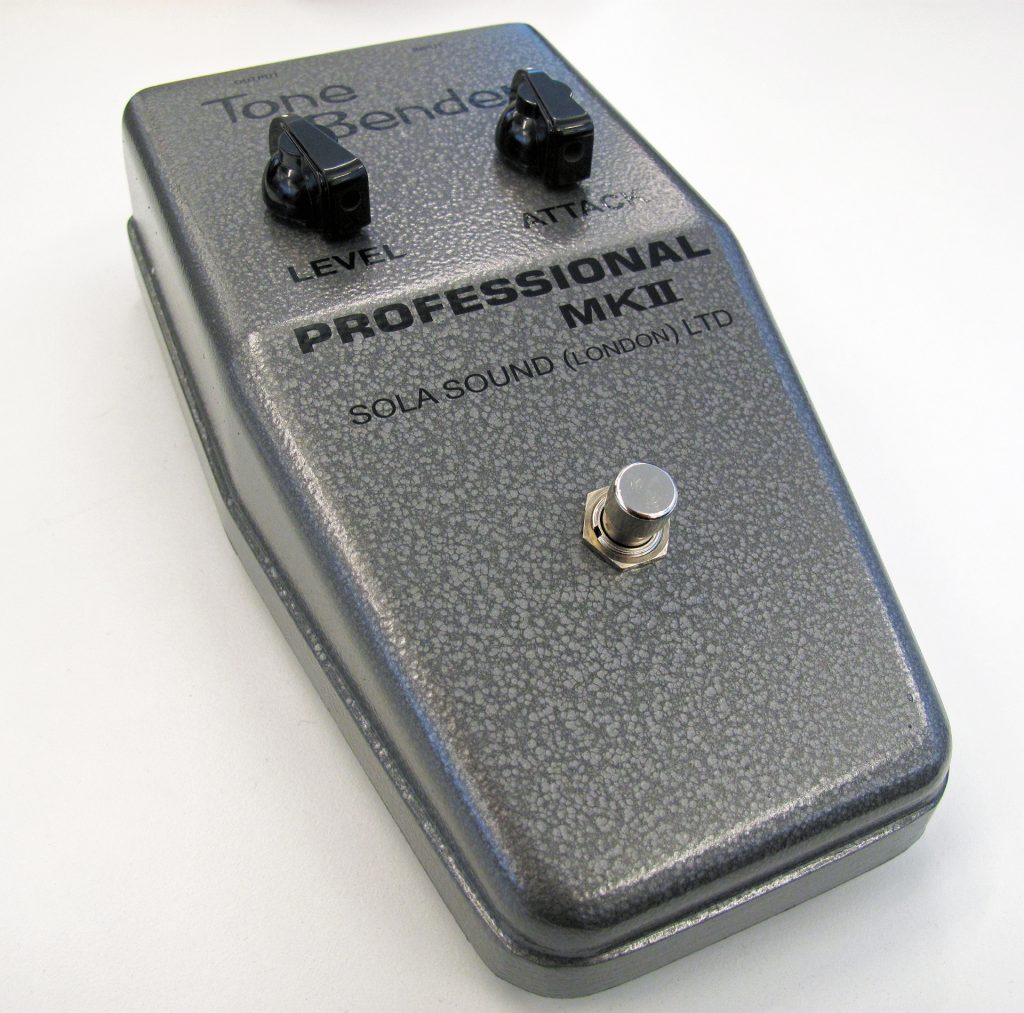One of the most talked-about pedals in recent years is the TB-2W Tone Bender. The unit is a groundbreaking collaboration between BOSS and the UK’s original boutique pedal builder: Sola Sound. Destined for cult status from day one, the TB-2W is the latest official Tone Bender design. It’s the latest in a historic lineage of fuzzboxes that dates back to 1965. At that time, the sound of fuzz first erupted from Sola Sound’s London workshop. Appearing on countless hits, Tone Benders shifted the way guitarists approached their instruments. The pedal pushed the era’s most influential players into radical new sonic territory.
Sound of the Swinging Sixties
Sola Sound’s humble beginnings in the heyday of Swinging Sixties London begin on Denmark Street, aka Tin Pan Alley. An area of the West End noted for its concentration of music shops, it remains a mecca for guitar players. Sola Sound claims the title of the UK’s first dedicated effects pedal company. The brand launched after Denmark Street shop owners Joe and Larry Macari teamed up with electronics engineer Gary Hurst.
The trio drew inspiration from session guitarist Vic Flick’s Maestro FZ-1 Fuzz-Tone. Flick modified his FZ-1 to produce more sustain. Gary set up shop in the Macari brothers’ Denmark Street premises and began building his own fuzz pedals. They knew they were on to something big. Their seminal creation was soon branded “Tone Bender” and a legend was born.

"In a nutshell, the MK I is the Mick Ronson/David Bowie sound, and the MK II is the Jimmy Page/Led Zeppelin sound."
-Ant Macari
A Family Business
Founded in 1958, Macari’s is now run by Joe and Larry’s respective sons, Ant and Steve. The pair pour their pride in the family firm into every Tone Bender Sola Sound builds. After all, a Tone Bender is far more than another fuzz pedal.
“We like to think it’s one of the most important pedals ever created,” says Ant. “It really did change how music was made. My dad and my uncle Larry opened the first music shop on Denmark Street. At least what you’d recognize today as a proper music shop with guitars. That’s where the first fuzz pedal happened.”
A British-born Legend
Ant goes on to discuss the uniquely British rock lineage of the pedal. “Tone Benders are the first-ever British fuzz pedal. The first one that came out in 1965 is now known as the MK I, and [by 1966] that became the Professional MK II,” he shares. “In a nutshell, the MK I is the Mick Ronson/David Bowie sound, and the MK II is the Jimmy Page/Led Zeppelin sound.”
Another rare version of the Tone Bender appeared as early as 1965. Now referred to as the MK 1.5, this pedal contains a two-transistor fuzz circuit. (The others use three transistors.) It’s likely the inspiration for the original Arbiter Fuzz Face. “In the early days, there was loads of stuff going on at the same time. Although branded as a Tone Bender, the 1.5 didn’t say Sola Sound on it,” explains Ant. “Larry was always making pedals to sell through some distributor or different shops. The 1.5 is what they based the Fuzz Face on, but the difference is it was a much better-built pedal.”

"Larry was also a huge fan of BOSS pedals and he would have thought the idea of a collaboration was fabulous." -Ant Macari
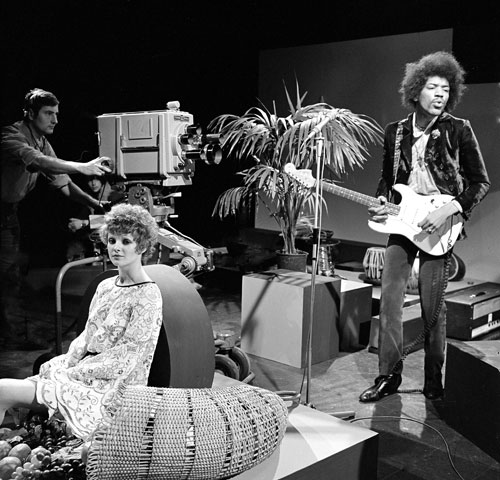
Fun Fuzz Facts
Ant shares a story of a legendary Seattle-born guitarist in search of the perfect tone. “There are stories of Hendrix going through dozens of Fuzz Faces before he found one he wanted. Hendrix shopped at Macari’s. He once bought two Vox AC10s from us. My dad always said he probably used them as headphones,” Ant laughs.
Having grown up on Denmark Street, Ant remembers when BOSS pedals first came to town in the 70s. Similarly, he recalls the arrival of Roland synthesizers on the British high street. “When I was a little boy, I used to go to my dad’s shop and the most fascinating things were the synthesizers,” he recollects. “They had this room full of funky, mad stuff. It looked like a spaceship.”
Mutual Admiration Society
Ant has always been a massive fan of Roland gear. “In fact, one of the main reasons this collaboration happened was because I knew Larry and my dad would have liked it,” he states. “Larry was also a huge fan of BOSS pedals and he would have thought the idea of a collaboration was fabulous.”
To that end, it’s not the first time Ant’s fielded collaboration ideas. “Quite a few people have approached us asking if we could make a pedal together, but it never felt right. Until now,” Ant says emphatically.
“There is something amazingly cool about BOSS effects,” he goes on to say. “I love the DS-1 Distortion. And I’m a massive fan of the CE-1 Chorus and DM-2 Delay. They’re just fabulous-sounding pedals. And they’re bulletproof.
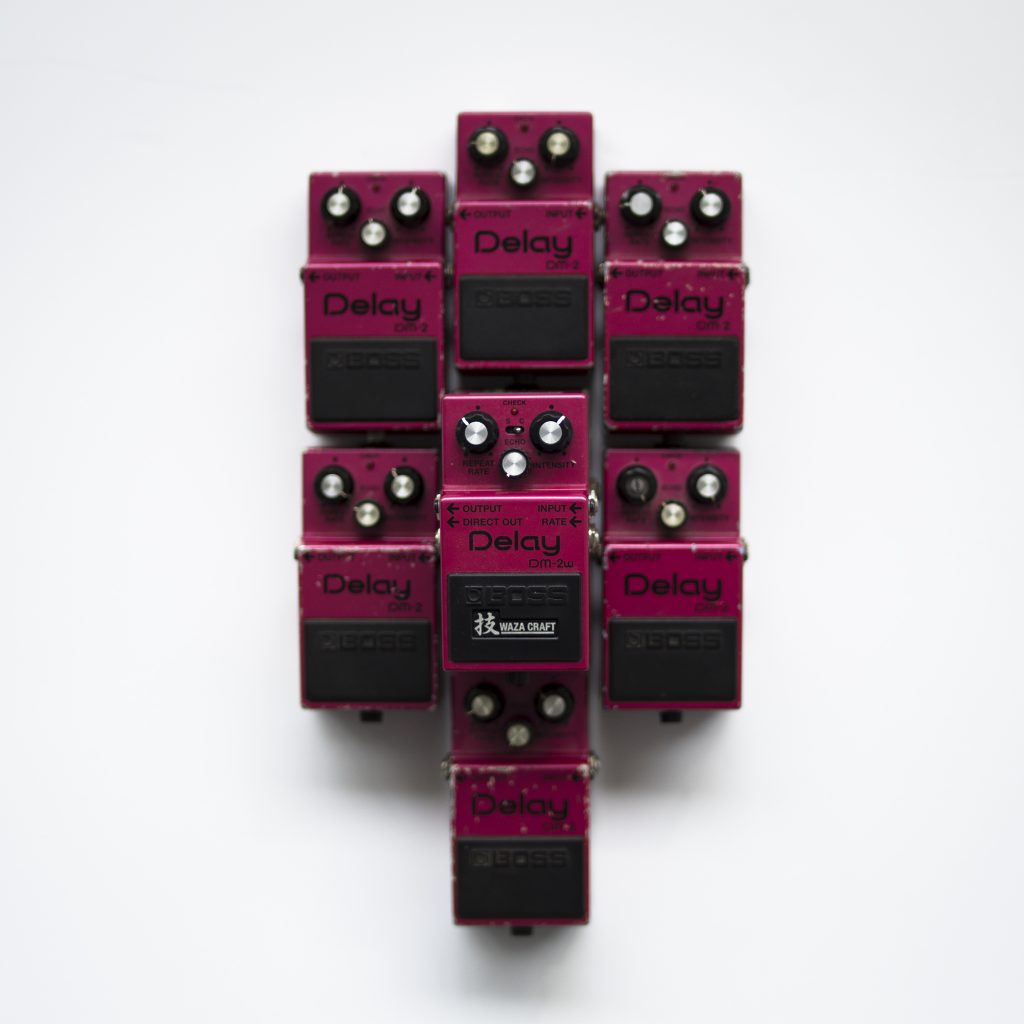
There’s one main difference between a Sola Sound pedal and a BOSS pedal that Ant highlights. “You can pick up ten Sola Sound MK II Tone Benders and probably tell them apart,” he says. “Whereas BOSS insists they sound exactly the same 100 percent of the time. We know just making one great-sounding MK II Tone Bender is a challenge, let alone thousands.”
Challenge Accepted
To Ant, this underscores the demanding nature of the project. “This collaboration was a massive undertaking for BOSS if they were going to get it right.” The two-year waiting list for a Sola Sound Professional MK II Tone Bender is a testament to its success. Still, for Ant and Steve Macari the goal is always quality rather than quantity.
“Authenticity is very important to us,” highlights Ant. “We try to keep it how our dads did it. The Sola Sound MK II has a phenomenal waiting list. They are really hard to build well. It’s a very slow process, but the result sounds so good. We want to make the best. That’s our thing.”
Like-Minded Partners
The pride both partners take in their products is at the heart of the collaboration. “BOSS truly understands how much we care about the products and what we are doing. The history is here at Macari’s,” he explains. “Yet if Sola Sound and BOSS were two companies moving in exactly the same direction, a collaboration wouldn’t make any sense.” The shared goal helped it all come together. “There’s no sense of competition at all. Indeed, it’s totally the opposite. We really do complement each other.”
“Building an MK II Tone Bender as a BOSS product makes sense,” Ant says. “As opposed to the MK I, which is so rebellious and nasty-sounding, the MK II has a sweetness and professional edge.” He feels that’s why it’s more “suited to being a BOSS pedal” than any of the other Tone Benders.
“BOSS has used a modern germanium transistor in the TB-2W. It’s all about the transistors. I picked out a really cool MK II pedal for them to do their research with—number 500.” Ant’s excitement about the unit is palpable. “It sounds like it’s from the 60s, but David Main made it. He’s the only guy who builds our Sola Sound MK II Tone Benders.”
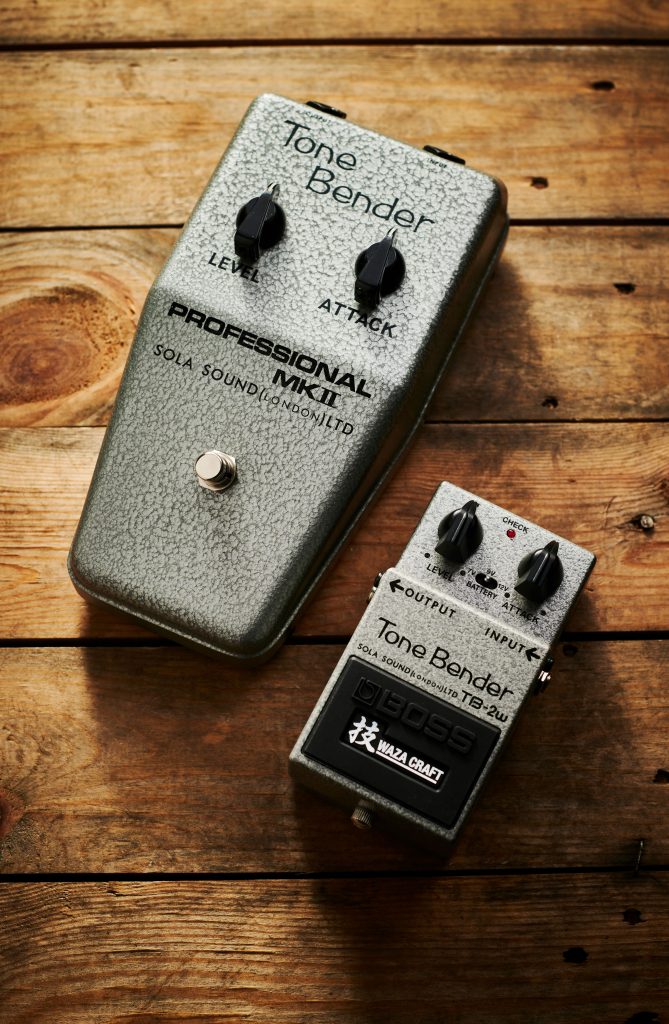
"We made it in 2013 as part of a batch of 20. It has a picture in the back I drew of a skeleton." -David Main

Meet the Masterpiece
Dubbed the “masterpiece,” Sola Sound’s exemplary MK II Professional Tone Bender number 500 served as the basis for much of the BOSS research. It’s the progenitor of the TB-2W Tone Bender prototype. “It has a picture in the back I drew of a skeleton saying, ‘I am skeleton jelly,’” reveals its builder, David Main.
Main gives some details about its makeup. “At that time, I’d have used Arcol carbon composition resistors, Vishay capacitors, and three Mullard OC84 transistors in an MK II Tone Bender.” He goes on to share some more fun rock lore. “We didn’t start using OC75s as standard until the batch that ran from number 606 to 616. Jimmy Page got number 582, so that had OC84s in it, but it also had an OC82D in it.”
Transistor Appeal
“I started doing this in 2009, and the one I built last was number 745. We were using OC84s when we first started building MK IIs. These are very similar to the OC81s used in MK IIs during late-1968. But everyone started asking for the earlier OC75s, so we eventually switched to those.”
The preference amuses Main. “Now everybody wants the OC84s again. So, we’ve switched back to using those in the MK II. I always preferred the OC84s because the bias is a little more forgiving with higher environmental temperatures.” ’60s retro lovers continue to fawn over the OC75. “If you’re going for a garagey, early Yardbirds kind of thing, you might like the OC75 sound.”

“It’s called 'The Masterpiece.' We carefully hand-carried it to Japan. It was really scary to ship this rare and sensitive pedal." -Yoshi Ikegami
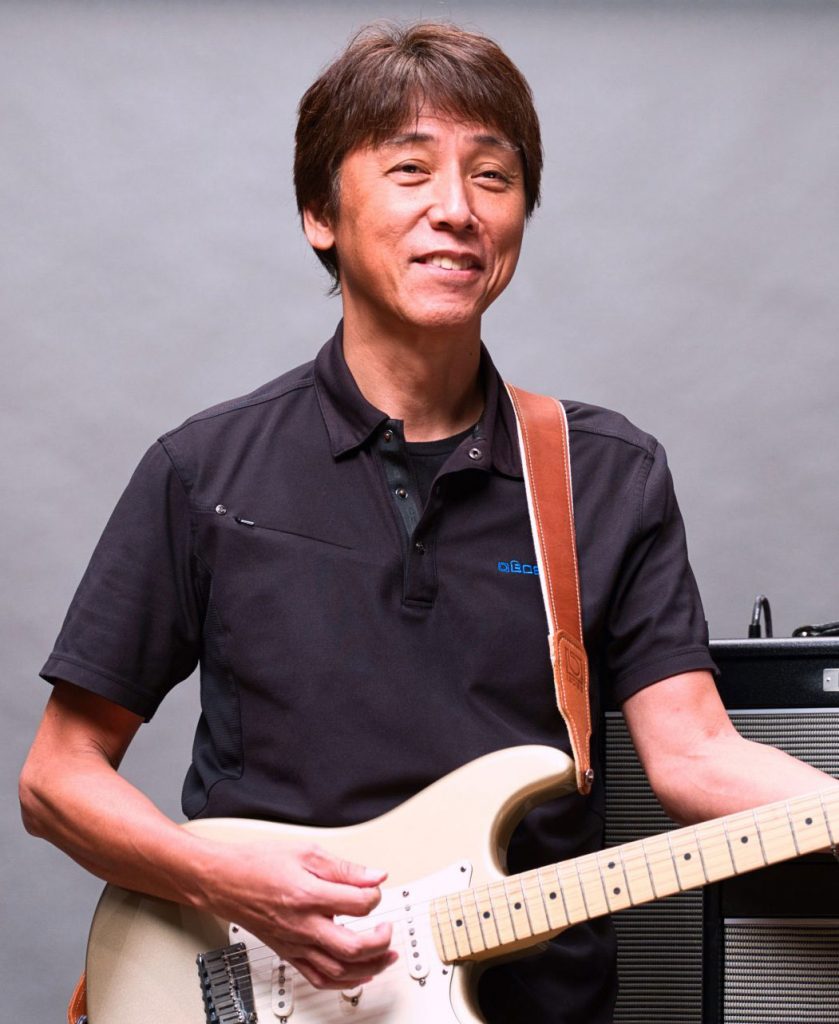
Magic Meets Science
They select and match the transistors which make it into a Sola Sound Tone Bender pedal during a time-consuming process. It’s one that requires skill, patience, and a good ear. “There are three transistors in an MK II Tone Bender, and you’ve got to get them to play nicely together and sit within a certain gain range,” clarifies Main. “And there needs to be a certain leakage quality for each transistor. If it’s too low and there’s next to no leakage, you won’t get a dynamic, exciting sound. But if it’s too high, you’ll get something that’s really noisy and out of control.”
There are elements of both science and magic at play. “It’s a little bit of witchcraft. We test all the transistors individually,” Main states. “So, it takes time to go through them and get a set of three which have these certain values you need to make it all work in a particular way.”
“Anthony Macari personally selected a Tone Bender MK II—number 500—for our research,” concurs BOSS president Yoshi Ikegami. “It’s called ‘The Masterpiece.’ We carefully hand-carried it to Japan. It was really scary to ship this rare and sensitive pedal.”
A Matter of Time
Ikegami reveals a bit about the painstaking BOSS process. “We began our deep analysis and experiments at BOSS. The first challenge was finding a source of germanium transistors. And also, how to purchase such a quantity of germanium transistors. Then, we got some samples and measured all the transistors’ specs. This was our first experience using such rare parts.” The project was a labor of love for Ikegami and BOSS. “Over two years we spent a lot of time and manpower.
“We took tremendous time to select and sort individually by hand,” he shares. “Our depths of analysis actually went deeper, to each individual transistor.” Much of this relates to the company’s perfectionism. “BOSS pedals should be consistent, functional, and stable in any environment to reach strict BOSS standards. Sometimes the variance of voltage by battery supply generates musical expression for tone. We wanted to add this unstable nature of the fuzz as a unique function. So, you can select three voltages to change the sound.”
To meet the highest standards, the BOSS team pressed on without worrying about time. “One challenge to another challenge, we were able to solve by spending our craftsmanship with no compromise. Anthony kindly waited for us with trust,” explains Ikegami. “He said, ‘The most important thing is the sound.’”
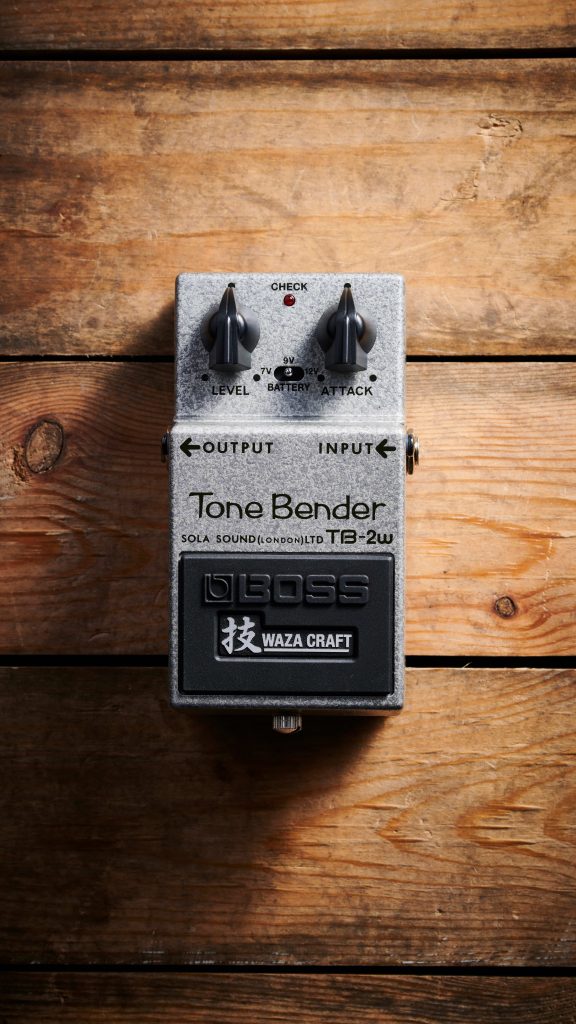
"Anthony kindly waited for us with trust. "He said, ‘The most important thing is the sound’.” -Yoshi Ikegami

The Big Moment Arrives
Meanwhile, back in London, Ant anxiously awaited news from BOSS. It had been over two years since David Main’s ‘masterpiece’ Tone Bender left England destined for Japan. Finally, in Spring 2020, a prototype suddenly arrived in the form of a familiar compact pedal. Wasting no time Ant grabbed a guitar, plugged in, and stomped on the new BOSS TB-2W Tone Bender. The sound spoke for itself.
“I just went, ‘Oh my god, they’ve nailed it,” he recalls. “I thought, ‘There’s no way it’s going to clean up,’ but when I rolled the volume back, I couldn’t believe it. It sounded so… right. The results were so authentic, Ant almost couldn’t believe his ears. “I thought maybe there was something wrong with me, so I A/B tested it with some Sola Sound MK IIs. Lo and behold, it was absolutely spot on.”
Final Touches
The icing on the cake of the collaboration came in an unusual form: a font. “One of the things I’m proudest about on this project is the Tone Bender logo,” Ant says. “I thought the BOSS pedal should use our font and it’s written in the original style, which is a great compliment to us as it’s the first time that’s happened.
Then there are those trademark knobs. “BOSS suggested the chickenhead knobs, and I said we’ve got to get the grey Hammerite look right as well,” he shares.” Still, at the end of the day, a single key factor reigned supreme. “But above all else is the sound—the sound comes first.”




